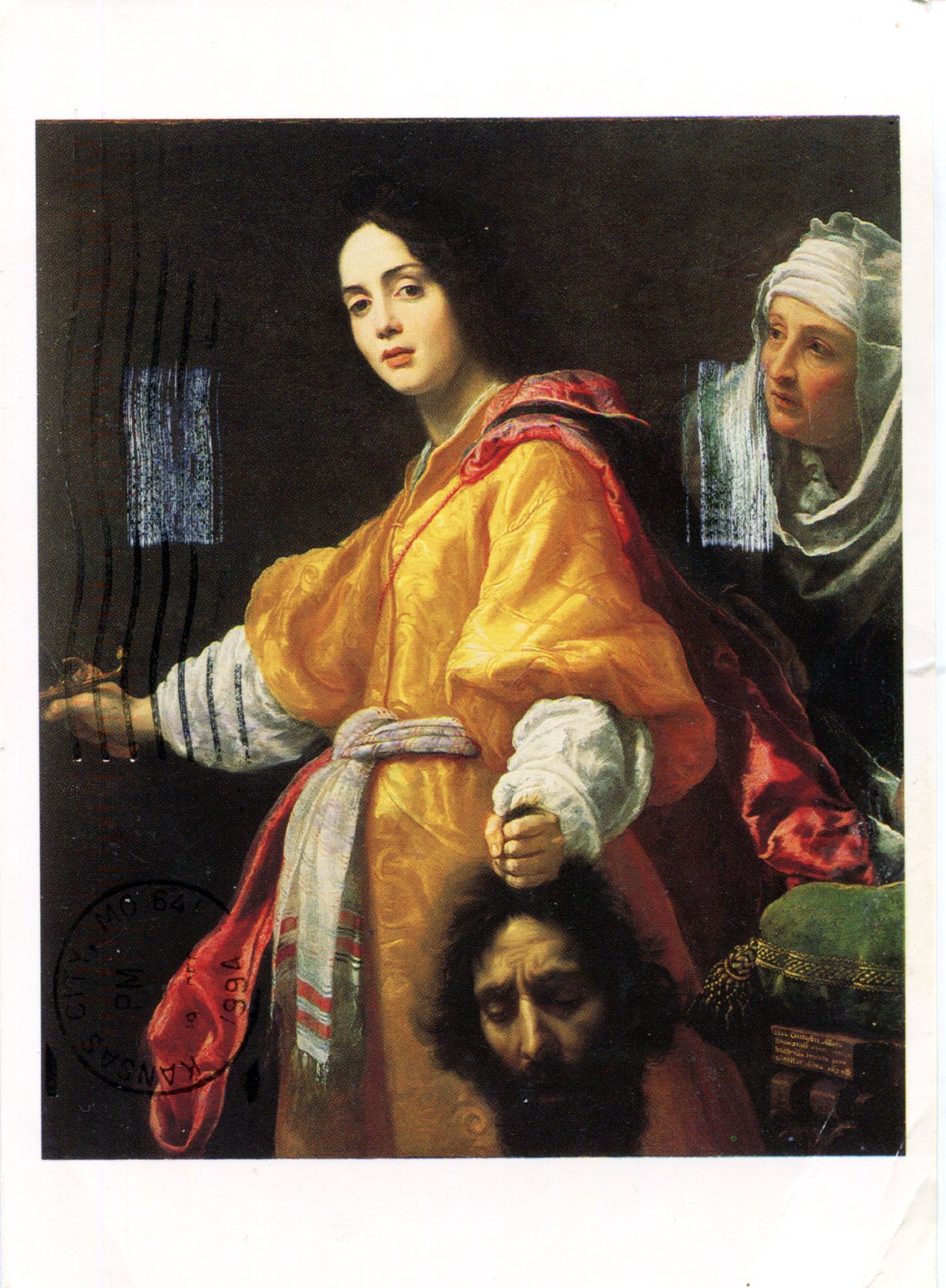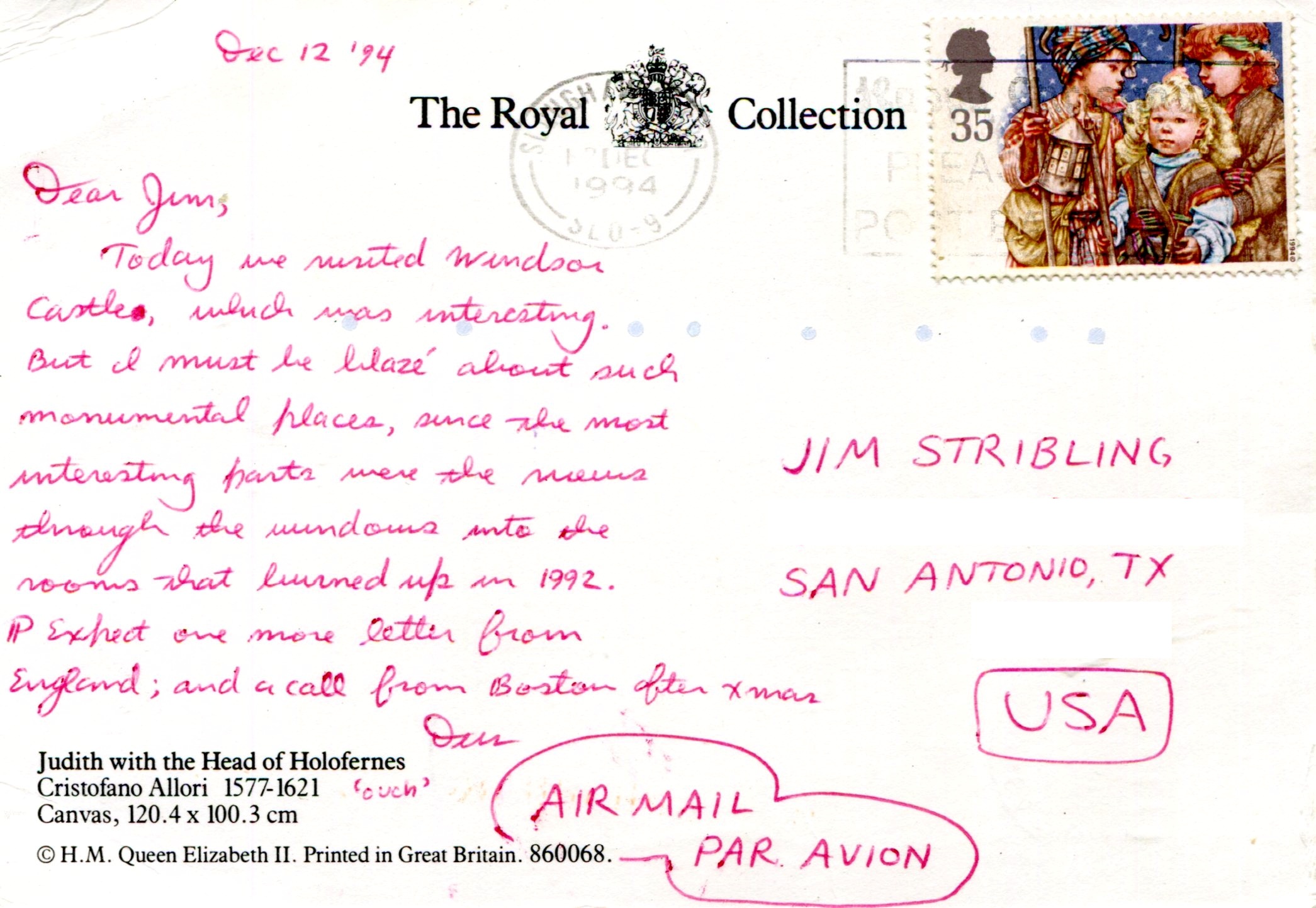I sent this card to my brother Jim in December 1994, on the day that we visited Windsor Castle.
The British postmark is where it should be. The USPS thoughtlessly postmarked the image. Nice going, USPS. Just another example of disrespecting postcards.
As this account of the 1992 Windsor Castle fire says, only two of the castle’s artworks were destroyed by the fire, not including the one depicted on the card, “Judith with the Head of Holofernes” (Cristofano Allori, 1613) which was part of the Royal Collection at Windsor. It still is.
At the time, I didn’t know anything about Allori or the painting. The Royal Collection Trust notes: “According to his biographer Baldinucci, Allori painted this work in part as an autobiographical account of his love affair with Maria de Giovanni Mazzafirri, which ended badly. The figure of Judith, Baldinucci claimed, resembles ‘La Mazzafirra,’ the servant in the background her mother, and the severed head of Holofernes is a portrait of the artist himself.”
I had seen “Judith I” (Gustav Klimt, 1901) in Vienna earlier that year, and of course the story of Judith came up in my studies, but I also didn’t really know how popular Judith was in artistic depictions. This I found out later. Nothing like a story of deception, a fetching feme, a drunken fool and a beheading to inspire art, I guess.
As for the work at Windsor, most recently — as in, last week — I read how it came to be in the Royal Collection. Acquired by Charles I, probably from the Gonzaga collection, Mantua, the trust says, which lead me to read further about the Gonzaga collection. If I had heard about it before, and I might had, I’d forgotten.
The long and short of it is that the House of Gonzaga, after much effort, put together a splendid art collection, only to sell it when they needed cash — to King Charles in the late 1620s, well before that monarch’s grim fate, in a deal facilitated by one Daniel Nijs.
The lesson here? Postcards are educational.